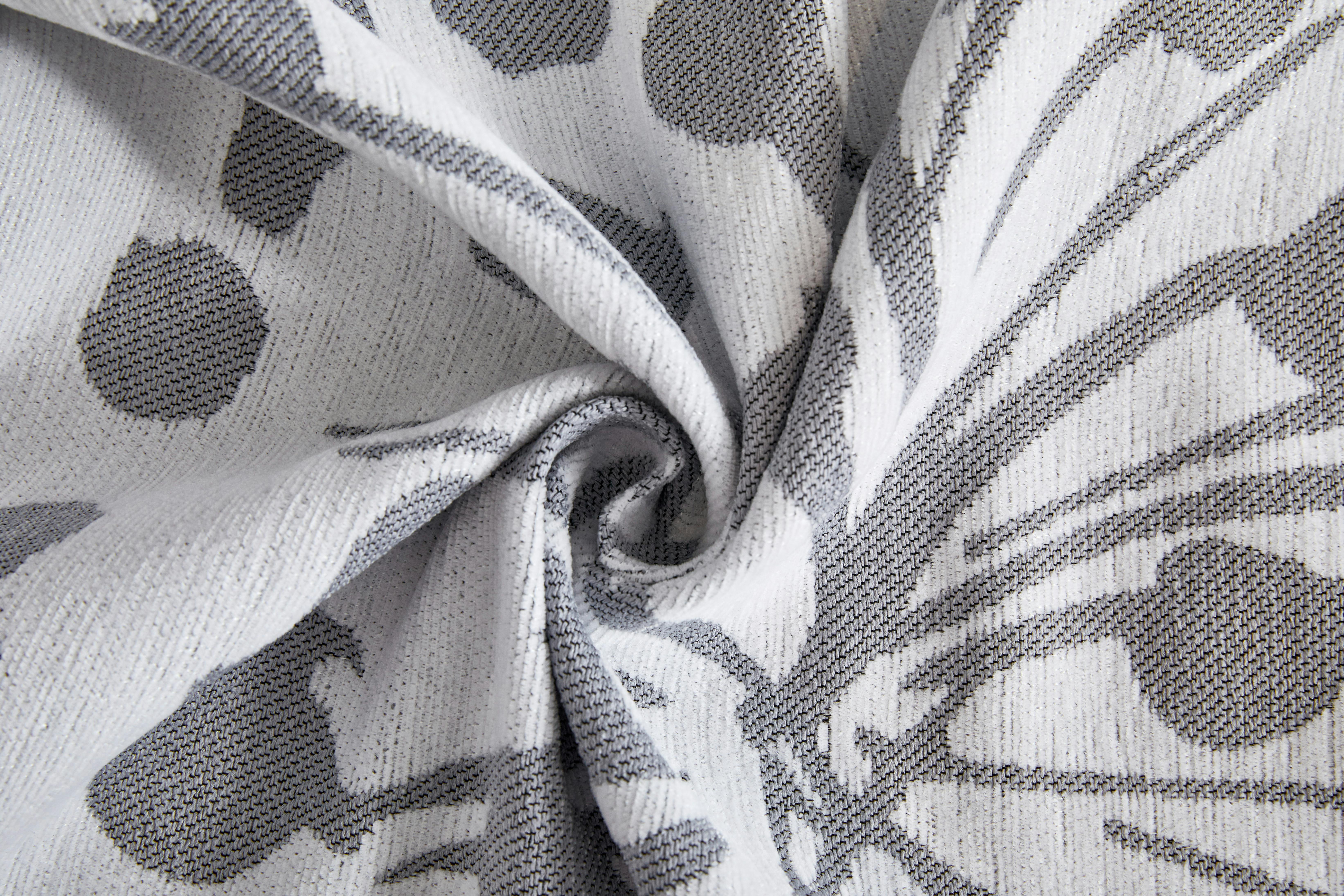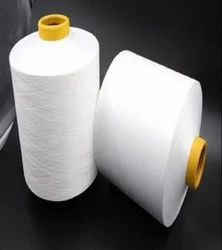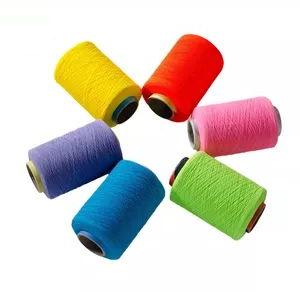Covered Spandex Yarn Explained

Covered spandex yarn is a unique textile fiber that combines the stretch and recovery properties of spandex with the durability and abrasion resistance of an outer covering. This innovative yarn structure is designed to provide enhanced performance characteristics compared to regular spandex yarns.
Definition and Production Process
Covered spandex yarn is created by wrapping a core of spandex fiber with a sheath of another textile fiber, such as nylon or polyester. The spandex core provides the essential stretch and elasticity, while the outer covering protects the delicate spandex filament and improves the yarn’s overall durability. The production process involves a specialized technique called “covering” or “air-covering,” where the spandex fiber is fed through a nozzle and wrapped by the sheath fiber using air pressure.
Advantages Over Regular Spandex Yarn
Covered spandex yarn offers several advantages over traditional spandex yarns. The outer covering provides better abrasion resistance, increased tear strength, and improved dimensional stability. This results in enhanced garment and textile longevity, as the covered yarn is less prone to pilling, snagging, and premature wear and tear. Additionally, the covering can improve the yarn’s ability to withstand repeated stretching and compression, making it an ideal choice for activewear, sportswear, and other high-performance applications.
Common Uses in Textiles
Covered spandex yarn finds application in a wide range of textile products, including:
- Activewear and sportswear: The combination of stretch, recovery, and durability makes covered spandex yarn a popular choice for athletic apparel, such as leggings, compression garments, and swimwear.
- Intimate apparel: The improved stretch and shape retention properties of covered spandex yarn are beneficial for lingerie, shapewear, and hosiery.
- Workwear and uniforms: The enhanced abrasion resistance and tear strength of covered spandex yarn make it suitable for use in industrial workwear, uniforms, and other demanding textile applications.
- Denim and bottom-weight fabrics: Covered spandex yarns are often incorporated into denim and other bottom-weight fabrics to provide the desired stretch and recovery without compromising durability.
Understanding the Price of Spandex Yarn

The price of spandex yarn, including covered spandex yarn, can vary significantly depending on a range of factors. Understanding these factors is crucial for businesses and consumers navigating the textile supply chain.
Factors Affecting Spandex Yarn Pricing
The price of spandex yarn is influenced by several factors, such as:
- Raw material costs: The price of the primary raw materials, including spandex polymer and the sheath fiber (e.g., nylon, polyester), can fluctuate based on global commodity prices and supply and demand dynamics.
- Energy and production costs: The energy-intensive manufacturing process, including the covering or air-covering step, can impact the overall production costs and, consequently, the yarn price.
- Transportation and logistics: The transportation of raw materials and finished yarn products, as well as the associated logistics, can contribute to the final price.
- Market demand and competition: Changes in the global demand for spandex-based textiles and the level of competition among yarn manufacturers can influence pricing.
- Currency exchange rates: Variations in exchange rates between the currencies of yarn-producing countries and the currencies of importing countries can affect the price for international buyers.
Price Comparisons Across Different Markets
Spandex yarn prices can vary significantly across different geographic markets, as they are influenced by the unique factors present in each region. For example, prices in the United States may differ from those in Europe or Asia due to differences in raw material sourcing, production costs, import duties, and market dynamics. Understanding these regional price variations is crucial for businesses looking to optimize their supply chain and procurement strategies.
Forecasting Trends in Spandex Yarn Prices
Accurately forecasting the future trends in spandex yarn prices is a complex task, as it requires monitoring a combination of factors, including raw material costs, energy prices, global trade patterns, and shifting consumer demand. Industry experts and market research firms closely track these variables to provide informed predictions on the likely direction and magnitude of spandex yarn price movements, allowing businesses to make more strategic purchasing decisions and manage their inventory and pricing accordingly.
Covered Spandex Yarn HS Code in India

The harmonized system code is an internationally standardized system of nomenclature used to classify traded products. Understanding the HS code for covered spandex yarn is essential for importers and exporters navigating the complexities of international trade.
Importance of HS Codes in Trade
HS codes play a crucial role in international trade by:
- Facilitating customs clearance and tariff calculations
- Enabling accurate data collection and analysis of trade flows
- Allowing for the harmonization of trade policies and regulations across countries
How Covered Spandex Yarn is Classified
In the Indian HS code system, covered spandex yarn is classified under the following code:
HS Code: 5402.44.00 – “Synthetic filament yarn (other than sewing thread), not put up for retail sale, including synthetic monofilament of less than 67 decitex: Other, of elastomeric”
This code specifically identifies covered spandex yarn as a synthetic filament yarn that falls under the “other, of elastomeric” category, which encompasses a range of elastic and stretch-based textile products.
Implications for Importers and Exporters
The HS code for covered spandex yarn has several implications for importers and exporters:
- Tariff and duty calculations: The applicable tariff rates and any import/export duties will be based on the specific HS code assigned to the product.
- Trade data tracking: HS codes allow for the accurate tracking and monitoring of trade flows for covered spandex yarn, enabling businesses to stay informed about market trends and competition.
- Regulatory compliance: Understanding the HS code is crucial for ensuring compliance with trade regulations, such as labeling requirements and documentation procedures, when importing or exporting covered spandex yarn.
Staying up-to-date with the latest HS code information and any changes or updates is essential for businesses engaged in the global trade of covered spandex yarn and other textile products.
Air Covered Spandex Yarn
Air covered spandex yarn is a specialized type of covered spandex yarn that utilizes a unique manufacturing process to create a distinct yarn structure and performance characteristics.
Definition and Unique Features
Air covered spandex yarn is produced by using air pressure to wrap a spandex core with a sheath fiber, typically nylon or polyester. This air-covering technique results in a yarn with a seamless, continuous sheath that provides better coverage and a smoother surface compared to traditional covering methods. The air-covering process also allows for better control over the yarn’s characteristics, such as the degree of stretch, tension, and bulkiness.
Benefits of Air Covered Spandex Yarn
The unique features of air covered spandex yarn offer several advantages:
- Improved stretch and recovery: The seamless sheath and enhanced control over the yarn structure can provide superior stretch and recovery properties, making it ideal for high-performance apparel.
- Enhanced abrasion resistance: The continuous sheath covering offers better protection for the delicate spandex core, improving the yarn’s resistance to wear and tear.
- Smoother hand feel: The uniform sheath coverage creates a softer, more comfortable hand feel for the resulting textile fabrics.
- Versatile applications: Air covered spandex yarn can be tailored to meet the specific requirements of a wide range of textile applications, from activewear to intimate apparel.
Industrial Applications and Market Demand
Air covered spandex yarn has found widespread adoption in various industrial and consumer textile applications, including:
- Activewear and sportswear: The enhanced stretch, recovery, and durability make air covered spandex yarn a popular choice for athletic apparel, such as compression garments, leggings, and sports bras.
- Intimate apparel: The smooth hand feel and shape-retaining properties of air covered spandex yarn make it suitable for lingerie, shapewear, and hosiery.
- Automotive and furniture upholstery: The abrasion resistance and stretchability of air covered spandex yarn make it a suitable choice for automotive and furniture upholstery applications.
- Medical and healthcare textiles: The versatile performance characteristics of air covered spandex yarn can be leveraged in specialized medical and healthcare textile products, such as compression stockings and bandages.
As consumer demand for high-performance, durable, and comfortable textile products continues to grow, the market for air covered spandex yarn is expected to expand, driven by its ability to meet the evolving needs of the textile industry.
Difference Between Polyester and Spandex
Polyester and spandex are two distinct textile fibers with different compositions, structures, and performance characteristics. Understanding the key differences between these two fibers is essential for selecting the appropriate material for various textile applications.
Fiber Composition and Structure
Polyester is a synthetic fiber made from the polymerization of ethylene glycol and terephthalic acid, resulting in a thermoplastic polymer. Polyester fibers have a linear, continuous molecular structure that provides strength and durability.
In contrast, spandex (also known as elastane) is a synthetic fiber composed of a polyurethane-polyurea copolymer. Spandex fibers have a segmented molecular structure, with alternating rigid and elastic segments, which gives them their unique stretch and recovery properties.
Performance Characteristics
Polyester is known for its strength, abrasion resistance, and dimensional stability. It also has good wrinkle resistance and quick-drying properties, making it a popular choice for a wide range of textile applications.
Spandex, on the other hand, is renowned for its exceptional stretch, elasticity, and recovery capabilities. Spandex can stretch up to five times its original length and quickly return to its original shape without permanent deformation.
Application Suitability
Polyester is widely used in a variety of textile products, including clothing, home furnishings, and industrial textiles, due to its versatility and cost-effectiveness.
Spandex is primarily used in applications that require stretch and elasticity, such as activewear, intimate apparel, hosiery, and other form-fitting garments. The combination of spandex with other fibers, like polyester or nylon, can enhance the performance and comfort of these textile products.
The choice between polyester and spandex, or a combination of the two, depends on the specific requirements of the textile application, including the desired level of stretch, durability, breathability, and overall performance characteristics.
Innovations in Covered Spandex Yarn Technology
The textile industry is continuously evolving, and advancements in covered spandex yarn technology are driving the development of innovative and sustainable textile solutions.
Advancements in Manufacturing Techniques
Manufacturers of covered spandex yarn are exploring new and improved production methods to enhance the yarn’s performance, efficiency, and environmental sustainability. These advancements include:
- Improved air-covering techniques: Refining the air-covering process to achieve better control over yarn characteristics, such as stretch, tension, and bulkiness.
- Hybrid yarn structures: Combining covered spandex with other fibers, like natural cellulosic materials, to create hybrid yarn structures with enhanced properties.
- Automated production systems: Implementing advanced automation and robotics in the manufacturing process to improve consistency, reduce waste, and increase productivity.
Sustainable Practices in Production
Textile manufacturers are increasingly focused on adopting sustainable practices in the production of covered spandex yarn, addressing environmental concerns and the evolving consumer demand for eco-friendly textiles. These initiatives include:
- Utilizing recycled or renewable raw materials: Incorporating recycled spandex, nylon, or polyester into the yarn composition to reduce the reliance on virgin materials.
- Implementing energy-efficient manufacturing: Optimizing production processes to minimize energy consumption and greenhouse gas emissions.
- Implementing water conservation and wastewater treatment: Deploying advanced water management systems to reduce water usage and ensure responsible disposal of wastewater.
Future Trends in Yarn Development
As the demand for high-performance, durable, and sustainable textiles continues to grow, the future of covered spandex yarn technology is likely to be shaped by the following trends:
- Continued advancements in manufacturing processes: Ongoing innovation in air-covering, hybrid yarn structures, and automation to enhance yarn performance and production efficiency.
- Increased focus on sustainability: Greater emphasis on the use of recycled or renewable raw materials, as well as the implementation of eco-friendly manufacturing practices.
- Expansion into new application areas: Exploring the use of covered spandex yarn in emerging textile sectors, such as medical textiles, smart fabrics, and industrial applications.
- Customization and personalization: Developing covered spandex yarns with tailored properties to meet the specific needs of individual textile brands and consumers.
These innovations in covered spandex yarn technology will play a crucial role in shaping the future of the textile industry, delivering more durable, sustainable, and versatile textile solutions to meet the evolving demands of consumers and industrial users.
Durability Enhancements with Covered Spandex Yarn
One of the primary advantages of covered spandex yarn is its ability to enhance the durability and longevity of textile products. The innovative yarn structure, featuring a protective outer sheath, provides significant improvements in wear resistance, abrasion resistance, and overall product lifespan.
Impact on Wear and Longevity
The outer covering of covered spandex yarn serves as a protective layer for the delicate spandex core, shielding it from the stresses and abrasion encountered during normal use and wear. This enhanced protection translates to:
- Increased resistance to pilling, snagging, and tearing: The durable outer sheath helps to prevent premature wear and damage to the textile fabric, ensuring a longer-lasting garment or product.
- Improved dimensional stability: The covered spandex yarn maintains its shape and size better over time, reducing the risk of garment deformation or loss of fit.
- Enhanced comfort and aesthetics: The improved durability helps to maintain the soft, smooth hand feel and visual appeal of the textile product throughout its lifespan.
Testing and Quality Assurance Measures
Textile manufacturers and brands employ various testing and quality assurance measures to evaluate the performance and durability of covered spandex yarn-based products. These measures may include:
- Tensile strength and elongation tests: Assessing the yarn’s ability to withstand tensile forces and its stretch and recovery capabilities.
- Abrasion resistance testing: Evaluating the yarn’s resistance to wear and tear through simulated abrasion tests.
- Pilling and snagging assessments: Examining the yarn’s susceptibility to pilling and snagging, which can compromise the garment’s appearance and feel.
- Accelerated wear testing: Subjecting the yarn-based textile to simulated real-world wear and tear to assess its long-term durability.
Case Studies of Durability Improvements
Numerous case studies have demonstrated the positive impact of covered spandex yarn on the durability and longevity of textile products. For example:
- In a study of sportswear fabrics, garments made with covered spandex yarn exhibited up to 30% longer lifespan compared to those made with regular spandex yarn, as measured by resistance to pilling and dimensional stability.
- In the intimate apparel sector, shapewear and hosiery products incorporating covered spandex yarn have reported up to 50% fewer consumer complaints related to premature wear and tear, leading to improved customer satisfaction and brand loyalty.
- Industrial workwear and uniforms incorporating covered spandex yarn have shown significantly reduced replacement rates, resulting in cost savings and a more sustainable supply chain for the end-user companies.
The enhanced durability and longevity offered by covered spandex yarn make it a valuable innovation in the textile industry, addressing the growing demand for high-performance, long-lasting textile products.
Conclusion
Covered spandex yarn is a transformative innovation in the textile industry, offering a range of benefits that address the evolving needs of both consumers and businesses. By combining the stretch and recovery properties of spandex with the durability and abrasion resistance of an outer covering, covered spandex yarn has become a critical component in the production of high-performance, long-lasting textile products.
The comprehensive understanding of covered spandex yarn, its manufacturing processes, pricing dynamics, and trade implications, as well as the ongoing technological advancements in this field, equips textile industry stakeholders with the knowledge necessary to navigate the complexities of this dynamic market.
As the demand for durable, sustainable, and versatile textile solutions continues to grow, the innovations in covered spandex yarn technology will play a pivotal role in shaping the future of the industry. By leveraging the enhanced performance characteristics and exploring new applications for covered spandex yarn, textile manufacturers and brands can unlock unprecedented levels of product quality, customer satisfaction, and environmental responsibility.
Support by us



